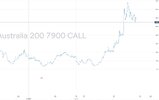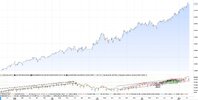- Joined
- 21 November 2022
- Posts
- 389
- Reactions
- 989
That system ive posted is more to exhibit how easy it is to curve fit an algo to suit that data set . A warning of sorts , plenty out there selling these types of almost perfect looking bots that are all hindsight based with minimal if any ability to repeat these results in realtime into the future . An actual robust algo capable of trading decades with a curve like that need to be multi faceted with filters to adjust to changing market states and volatility .Consistency is the hardest thing to achieve in trading, it requires a trading system with no weak spots. @Chipp has achieved it with this system. Chip can you tell us more about your system?
In reality achieving this is more complex than you would think . An algo of this type sort of needs to be a suite of individual algos that each can handle a defined set of market conditions with a filter to change from one to the other , some market conditions just cannot really be dealt with tbh and in these rare conditions the bot needs to be effectively turned of until conditions are more stable . An intuitive algo such as this if built will not be sold or rented for any amount of money , it will be traded . Recently Jim Simons passed , The goat of systematic rules based trading . Possibly the only guy to truly master this style of trading . Go and check him out and dig up the returns of his Medallion fund , absolutely mindblowing .
The takeaway here is be dubious on extraordinary returns touted by online sellers of algos . If they legitimately could return 25% annually over 40 years the last thing they would ever do is sell/rent it out at $99 a month , they would trade it ....






